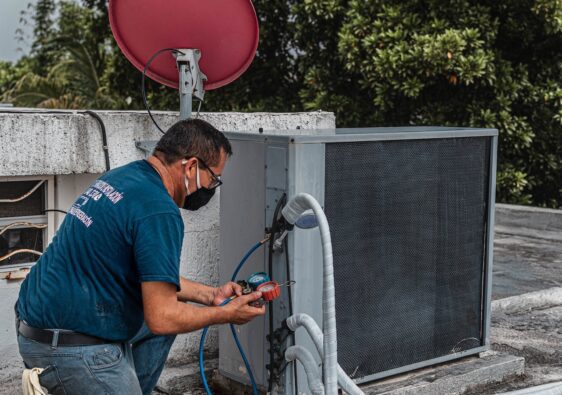Do you have gorgeous greenery around your home?
If you said no, then you might be making some landscaping mistakes. Homeowners make common mistakes when laying out their gardens and landscaping. And if you want to avoid them, then you should follow along!
We’ll review a few mistakes in residential landscaping that you should avoid. Keep reading to learn more!
1. Not Setting a Budget in Advance
Not setting a budget in advance is a common mistake when it comes to residential landscaping. Without a landscaping project budget, the cost could get out of control pretty quickly.
To avoid this, it is important to set a budget before deciding on any landscaping plans. Start by determining exactly what you need and what you are willing to spend.
Consider all the factors, including the cost of materials. Also, consider the cost of installing and maintaining your landscaping. Know what you’re willing to spend and make sure it’s realistic given the size of your residential landscaping project and the labor needed.
You should also research local vendors and services and get multiple bids. This way, you can pick the best quality for the best price.
Once you’ve figured out your budget, focus on what is important and make sure to stick to it. Setting a reasonable budget will allow you to achieve the perfect outdoor space while staying within your means.
2. Not Taking a Holistic Approach
Not taking a holistic approach is one of the most common mistakes people make in residential landscaping. This is when people focus on achieving a specific goal without considering the impact their choice will have on the environment.
To avoid these pitfalls, be sure to consider the long-term implications of your landscaping decisions. Make sure to consider the local environment as well.
You must also use local resources, such as climate data, soil maps, and native and sustainable plant species. These can support the environment and conserve resources.
Additionally, consider alternative landscaping solutions such as xeriscaping and permaculture. These maintain a less intensive need for irrigation and maintenance. By taking a holistic approach, you can create a landscape design that is pleasing and beneficial for the environment.
3. Failing to Make the Design Functional
One common mistake in residential landscaping is failing to make the design functional. A plan that looks great but does not have practical elements, such as an adequate drainage system, may not be beneficial in the long run.
There are other functional elements that you should consider. These include proper grading, an appropriate amount of soil, and pathways to other areas of the landscape. It is also important to think about how functional elements will interact with each other.
Avoid this mistake by discussing the functional elements with a professional landscape designer. Be sure to plan the design on paper, and then work with a professional to ensure everything’s done correctly. By doing this, the design can be both aesthetically pleasing and functional.
4. Bad Irrigation Planning
One of the most common mistakes in residential landscaping is bad irrigation planning. If not done properly, it can end up leading to excessive water usage, water spots on surfaces, and cause of further problems to the landscape.
To properly plan your irrigation system, you must know how much water your soil needs. You must map the areas that need watering, and select the right sprinkler heads. Additionally, you must use tubing and hoses of the correct size. This is so that your system is strong enough to water your yard properly.
A frequently missed part of renovations is the drainage system, especially in areas prone to heavy rain or flooding. There are many resources online that can answer questions you might not even realize you need to ask, like what is a french drain system and how can this help the drainage of your yard. There are also other things that you can find solutions to that could cause you trouble in the long-term if you don’t deal with them in your initial planning.
Poorly planned irrigation systems can lead to overwatering and runoff. These two issues will cause damage to your landscape and require repair. Luckily, you can avoid these mistakes by taking the time to plan irrigation correctly.
5. Forgetting About Privacy
Forgetting about privacy when coming up with residential landscaping is a common mistake. It will leave people exposed and at risk of possible security issues.
To avoid these issues, incorporate plenty of ways to create privacy in your landscaping design. Strategically place bushes, fences, and trees on the property to ensure that no one can easily peep at things inside.
Trellises and arbors with flowering vines can make privacy walls. They are visually appealing and efficient for limiting homeowners’ exposure to nosy neighbors.
Additionally, you can install denser trees or tall shrubs with deep root systems. They create an even more robust privacy buffer. Taking the time to ensure the property space is secure can help avoid security issues in the future.
6. Neglecting Local Wildlife
Neglecting local wildlife is a common mistake in residential landscaping. Unfortunately, it often leaves native animals without a safe place to call home.
Residential yards can provide food, water, and shelter for birds, mammals, and other local wildlife. So it is important to avoid the mistake of neglecting them.
To prevent this from happening, homeowners should provide native plants. This is to create natural habitats for animals. They must also provide birdbaths and water sources for them to enjoy.
Additionally, you must fence off open-air spaces from domestic animals. This can help ensure the safety of native wildlife.
Finally, homeowners should avoid cutting down trees and shrubs on their property. These are important habitats for local animals. By following these steps, homeowners can help encourage native animal populations.
7. Poor Plant Selection and Placement
One of the common residential landscaping mistakes is poor plant selection and placement. It is important to research and find plants that will thrive in the climate and environment. Also, select native species because they will adjust better and need less maintenance.
Planting too close to the house can add extra humidity levels leading to mold and mildew. An optimal distance should be between 18-24 inches.
Think about sunlight and the plants’ needs. Select mostly sun-tolerant plants if the space gets ample sunlight and vice versa. Grouping plants with similar light, water, and soil needs is another way to ensure all plants thrive.
Finally, be wary of invasive species to prevent them from spreading. It may be best to avoid them altogether. Taking all these steps will help ensure an attractive landscape and save you time, energy, and effort in the long run.
Avoid These Mistakes in Residential Landscaping and Start Planning Today
Residential landscaping can be a tricky task. But by avoiding common mistakes in residential landscaping, you can create a backyard paradise! With the right knowledge and planning, you’ll have the perfect outdoor oasis in no time.
So, why wait? Get started today!
For more expert tips, be sure to visit our blog for more helpful articles!



